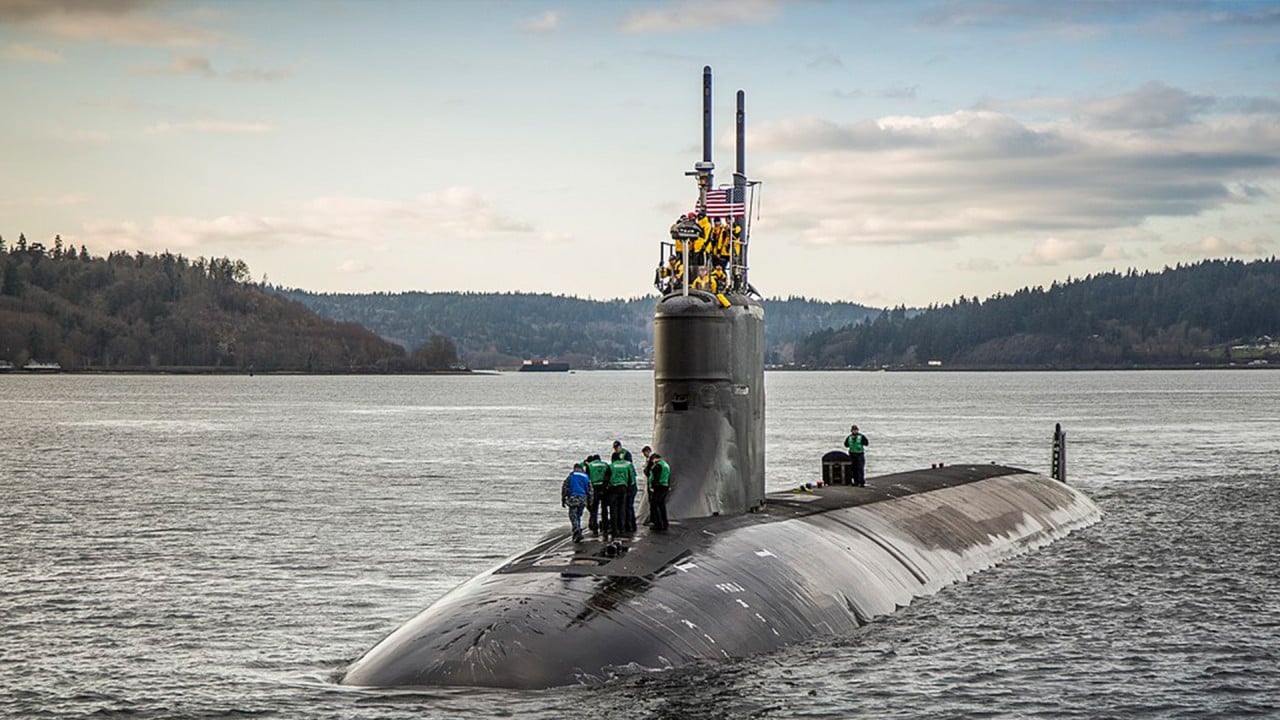Chinese military focusing on nuclear-powered subs with eye on US Navy: analysts
-
-
The PLA submarine force has for the first time publicly acknowledged a strategic shift away from conventional submarines
Published: 10:00pm, 21 Jun 2024
China’s increased focus on nuclear-powered submarines is aimed at boosting long-distance naval combat and deterrence power amid growing risks of high-seas confrontation with the US, according to military analysts.
The People’s Liberation Army has for the first time publicly acknowledged a strategic shift away from conventional submarines, as Beijing pushes to build a modernised military by 2027.
“The current development of China’s submarine fleet is dual-capable, both nuclear-powered and conventional, with a focus on nuclear capabilities,” Wen Xuexing, a member of a PLA Navy submarine unit, told state broadcaster CCTV.
“Our nuclear submarines are routinely patrolling at sea,” Wen told a CCTV programme to mark the 70th anniversary of the navy’s submarine force on Wednesday.
The submarine force had achieved “historic breakthroughs” in torpedo attacks and missile attacks, strengthening its combat capabilities, Wen said.
“We can reach regions farther away and we are more confident in our mission.”
As Beijing ramps up efforts to boost its strategic defence capabilities, it has also ordered the PLA Navy to strengthen battle readiness.
Yue Gang, a retired PLA colonel, said the submarine force move was part of the navy’s drive to increase long-distance and multiple-combat strength.
“The ability of conventional submarines to dive persistently at sea is limited. These can only conduct near-sea operations, while nuclear-powered submarines are capable of staying submerged for prolonged periods and can therefore complement the PLA’s pelagic formations,” he said.
“Moreover, the submarine of the future needs to be a multipurpose weapon … so it will require a powerful drive. The conventional sub would find it hard to meet the power demand.”
The PLA Navy has six nuclear-powered Type 094 ballistic missile submarines, including two advanced Type 094A variants, and six nuclear-powered Type 093 attack submarines, according to the Pentagon.
The Type 094 can fire JL-2 submarine-launched ballistic missiles which, the Pentagon said, could reach the US mainland if operated from the mid-Pacific.
The Type 094A improves upon this with the potential for 16 launch tubes and the enhanced JL-2A missile, possibly capable of reaching the entire United States from China’s shores, according to a report last year from the Belgium-based Army Recognition Group, a defence advisory agency.
Research published by the US Naval War College last year said there was mounting evidence that China’s Type 096 nuclear-powered ballistic missile submarine was likely to be in operation before the end of the decade.
The new submarine will fix its noise problem, a key issue for China’s nuclear submarines, and would be comparable with state-of-the-art Russian submarines in terms of stealth, sensors and weapons, the college said.
Yue added that only nuclear-powered submarines were capable of keeping up with aircraft carriers at full speed, which meant developing them could effectively strengthen the PLA Navy’s carrier formations.
China has two aircraft carriers in service, the Liaoning and Shandong, while a third one – the Fujian- is still undergoing trials.
A fourth carrier, to be unveiled soon, is widely believed to be nuclear-powered, but Beijing has yet to confirm this.
Song Zhongping, a former instructor for the PLA, said China’s nuclear-oriented submarine force was seen as “a move towards an ocean-going and strategic navy with the heavy presence of aircraft carrier formations”, which was “a major shift in China’s naval strategy”.
“It is inevitable that we need to strengthen our nuclear capability and our naval capability … The international situation is changing rapidly, and it is all the more necessary for us to strengthen our self-respect and our security capabilities,” Song said.
The strategic change comes as China faces a deteriorating maritime security situation and potential stand-offs with nuclear-powered navies such as the US’s, particularly in the Taiwan Strait and South China Sea.
Beijing’s extensive territorial claims in the South China Sea overlap with those of several neighbours, including the Philippines, which has been involved in a string of clashes over the past year with the Chinese coastguard.
Washington has deployed five nuclear-powered submarines in its Pacific Ocean territory Guam.
Yue, the former PLA colonel, said this was to “provide nuclear deterrence for the first island chain”, which includes Japan, Taiwan and the Philippines.
Both Japan and the Philippines are US treaty allies, while Washington is Taiwan’s biggest backer and arms supplier.
US nuclear-powered submarines are known to patrol the South China Sea and the Sea of Japan.

03:10
US submarine strikes unknown underwater object in disputed South China Sea
US submarine strikes unknown underwater object in disputed South China Sea
Yue, the former PLA colonel, added that the growing need for nuclear deterrence meant China needed to develop effective “dual nuclear” capabilities, that is, both nuclear-powered submarines and missiles equipped with nuclear warheads.
Such a “dual nuclear” capability was publicised in April, when the Chinese navy released rare footage of the launch of a JL-2 ballistic missile from a Type 094A sub.
The clip was part of a video showing China’s Shandong aircraft carrier fleet, including four submarines, carrying out simulated exercises in an undisclosed location.
The video, released to celebrate the 75th anniversary of the PLA Navy, came just ahead of US Secretary of State Antony Blinken’s visit to China and just weeks before the inauguration of Taiwan’s new independence-leaning leader, William Lai Ching-te.
Beijing sees Taiwan as part of China to be reunited by force if necessary. While the US, like most countries, does not recognise Taiwan as an independent state, it is opposed to any attempt to take the self-governed island by force and is committed to supplying it with weapons.
On Tuesday, a PLA Navy nuclear-powered submarine also showed up in the Taiwan Strait, just west of the median line separating Taiwan from mainland China. The sighting was about 200km (120 miles) from the island’s west coast.


